1. Woolworth’s
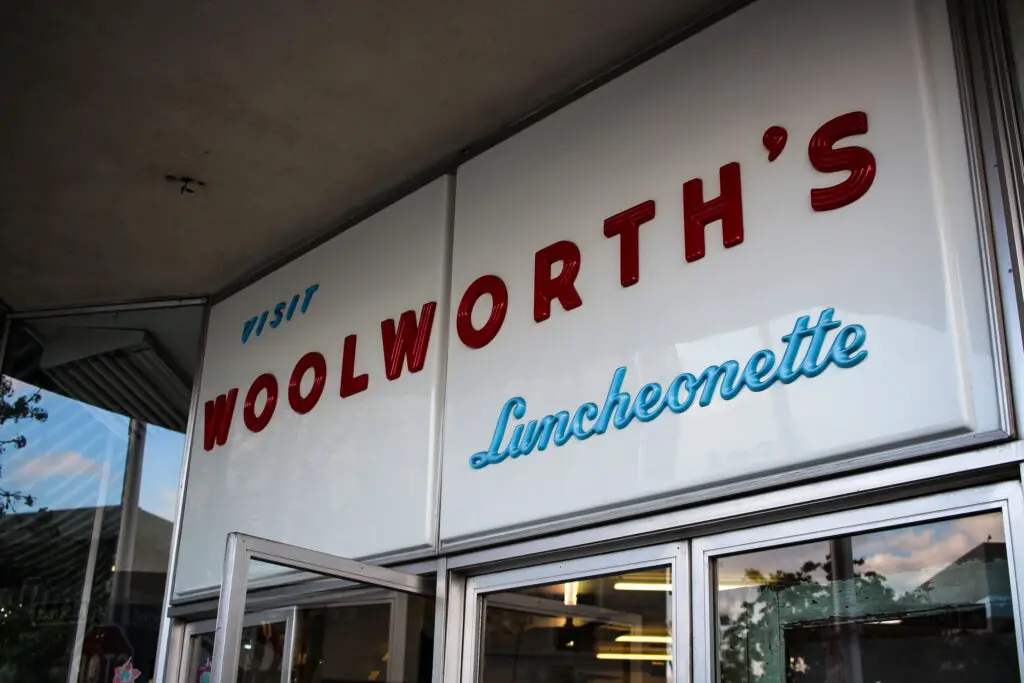
For decades, Woolworth’s was the place families went for just about everything. It started as a five-and-dime store and grew into suburban shopping centers across the country. The big draw wasn’t just the merchandise, but also the lunch counters, which became part of many people’s daily routines. Kids might remember sitting at the counter for a grilled cheese and a milkshake while parents shopped.
By the late 20th century, though, Woolworth’s had trouble keeping up with bigger discount chains that offered more variety at lower prices. The company tried shifting focus to specialty stores, but the core Woolworth’s stores closed in the ’90s. For many, the closure felt like the end of a suburban era. Today, the name survives mostly in nostalgic stories of five-and-dime simplicity.
2. Ames
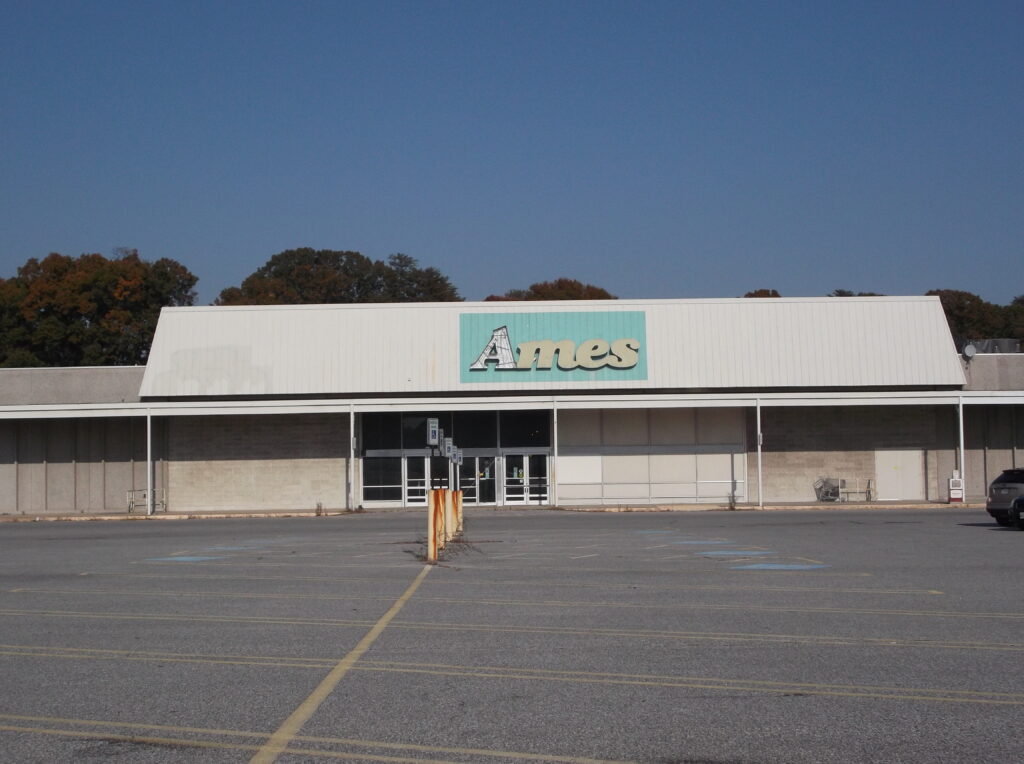
Ames was one of those discount chains where you could find a little bit of everything. It wasn’t glamorous, but it was dependable for families trying to stretch their dollars. Whether it was school supplies, housewares, or discounted clothing, Ames was part of many suburban shopping routines.
The chain grew rapidly by swallowing up smaller competitors like Zayre, but the growth turned out to be its downfall. Stores became overextended and struggled to keep up with national discount heavyweights like Walmart and Target. By 2002, the company closed for good, leaving shoppers in smaller towns especially feeling the loss. Today, the name Ames pops up only in nostalgia threads online.
3. Woolco
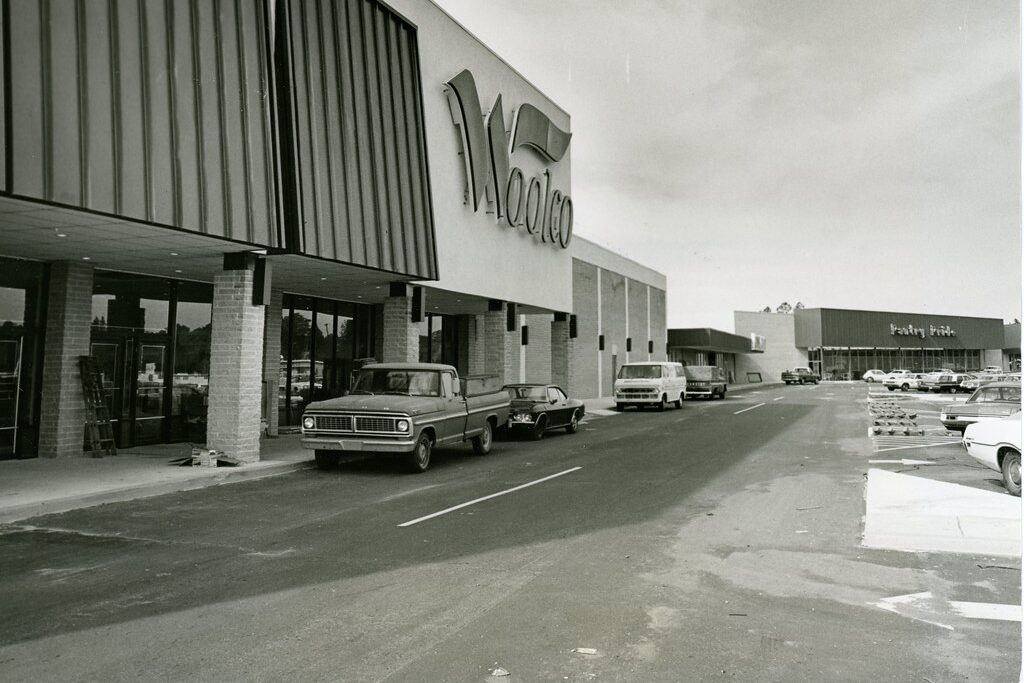
Woolco was the suburban cousin of Woolworth’s, meant to compete with the big discount stores sprouting up in the 1960s and ’70s. These large-format stores had wide aisles and bargain prices, and they quickly became fixtures in shopping plazas. People went for clothes, toys, and home goods, making it a one-stop suburban destination.
But Woolco couldn’t quite keep up with Target and Kmart, both of which had stronger branding and bigger expansion plans. By the early 1980s, the company started closing its U.S. stores. In Canada, the chain lasted longer until Walmart eventually took over. For many suburban families, it’s a reminder of how quickly a familiar name can vanish.
4. Zayre
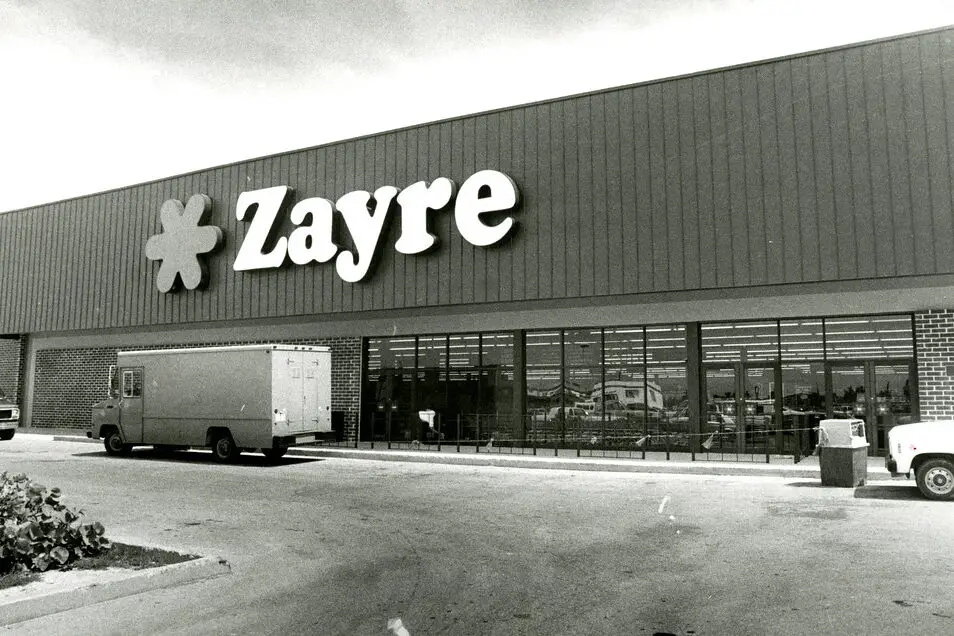
If you wanted affordable clothing and housewares in the ’70s and ’80s, Zayre was the spot. The bright red logo stood out in strip malls, and the chain became known for its no-frills shopping experience. Zayre was especially popular in New England and the Midwest, making it a suburban staple in those areas.
The trouble came when it tried to compete too directly with giants like Kmart. Despite loyal customers, Zayre’s stores started to look dated and couldn’t draw the same crowds anymore. Ames bought out the company in 1988, but that merger didn’t save either chain in the long run. Now, Zayre feels like a name you only hear in conversations about lost retail giants.
5. Service Merchandise
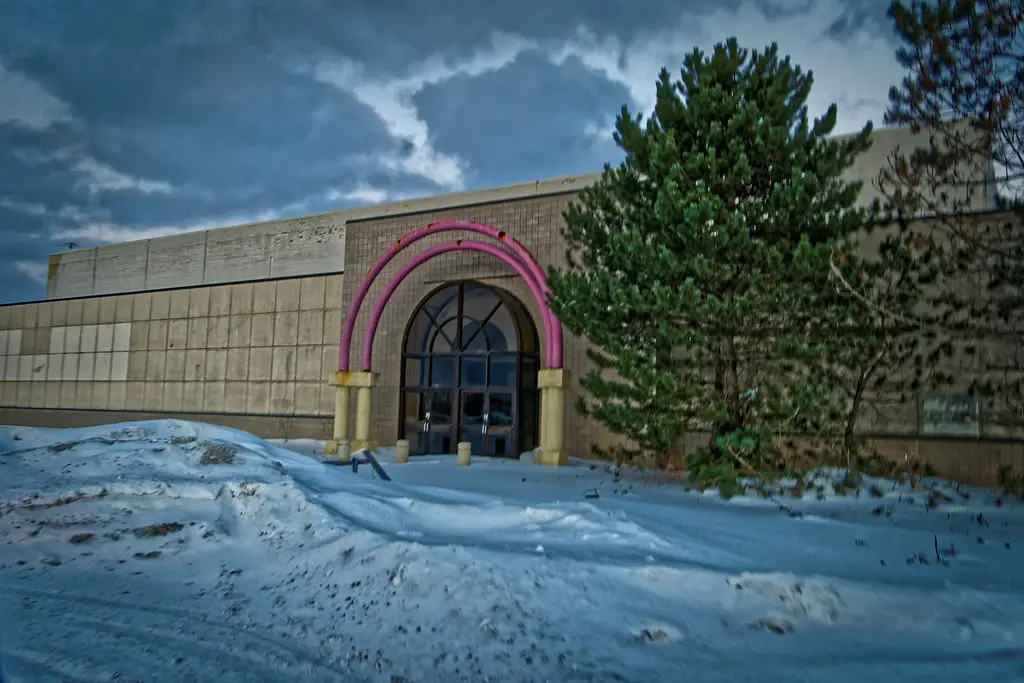
This was one of those catalog-showroom hybrids that confused kids but fascinated adults. You’d browse a catalog, fill out an order slip, and then wait for your items to be brought out from the back. Jewelry, electronics, and housewares were their bread and butter, and for many families, buying something there felt like a special occasion.
But the quirky shopping model lost steam as traditional big-box retailers streamlined the process. Why fill out a slip when you could just grab the toaster off the shelf at Target? By 2002, Service Merchandise closed up shop. Still, the memories of conveyor belts delivering your purchase out front live on in suburban nostalgia.
6. Caldor

Caldor was another big name in the suburban discount-store scene, especially in the Northeast. Known for low prices and wide selections, it was often compared to Kmart. Families flocked there for back-to-school shopping or household basics, and the chain had a loyal following.
But like so many others, Caldor couldn’t keep pace with Walmart’s rapid expansion. By the late ’90s, its stores looked outdated, and financial troubles piled up. The company filed for bankruptcy in 1995 and liquidated just a few years later. Empty Caldor buildings sat in suburban plazas for years, reminders of a once-busy store.
7. Hills
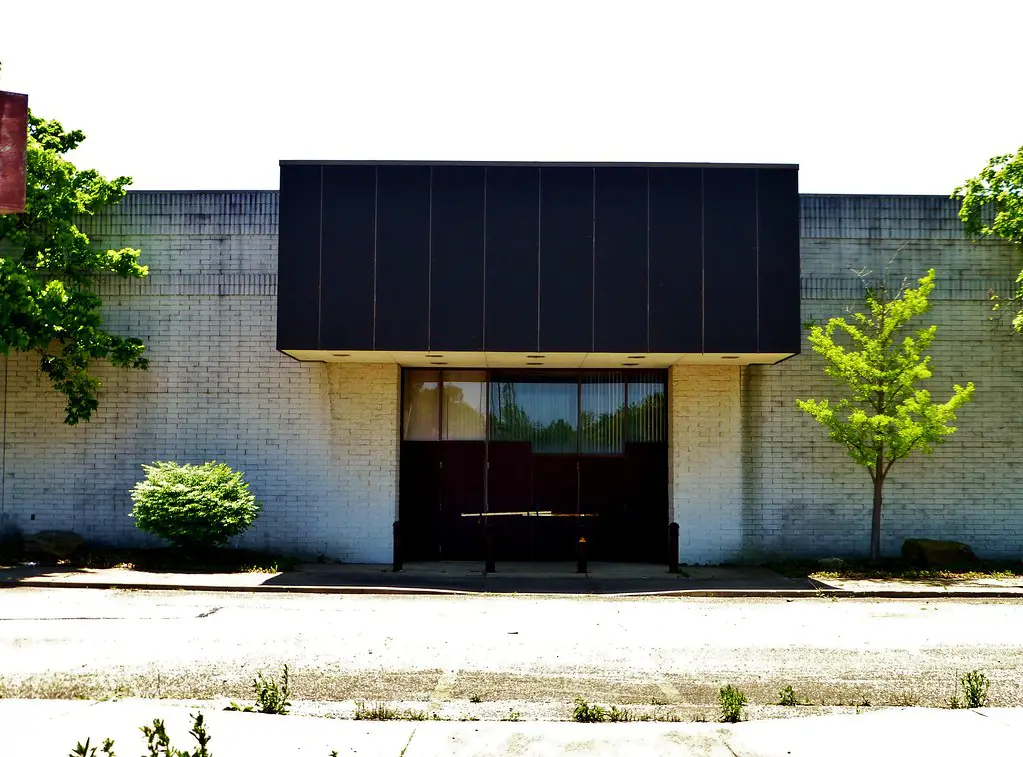
For many kids, Hills was magical because the toy aisles seemed endless. Parents liked it for the deals, but kids remember it as the place where they begged for the latest dolls or action figures. The chain had a special hold on suburban areas in the Midwest and Northeast.
But like so many mid-level discount stores, it struggled as national competitors expanded. Ames eventually bought Hills in the late 1990s, but it wasn’t enough to keep the brand alive. Hills disappeared, taking with it countless childhood memories of toy shopping trips. People still smile when they recall the old Hills commercials.
8. Venture
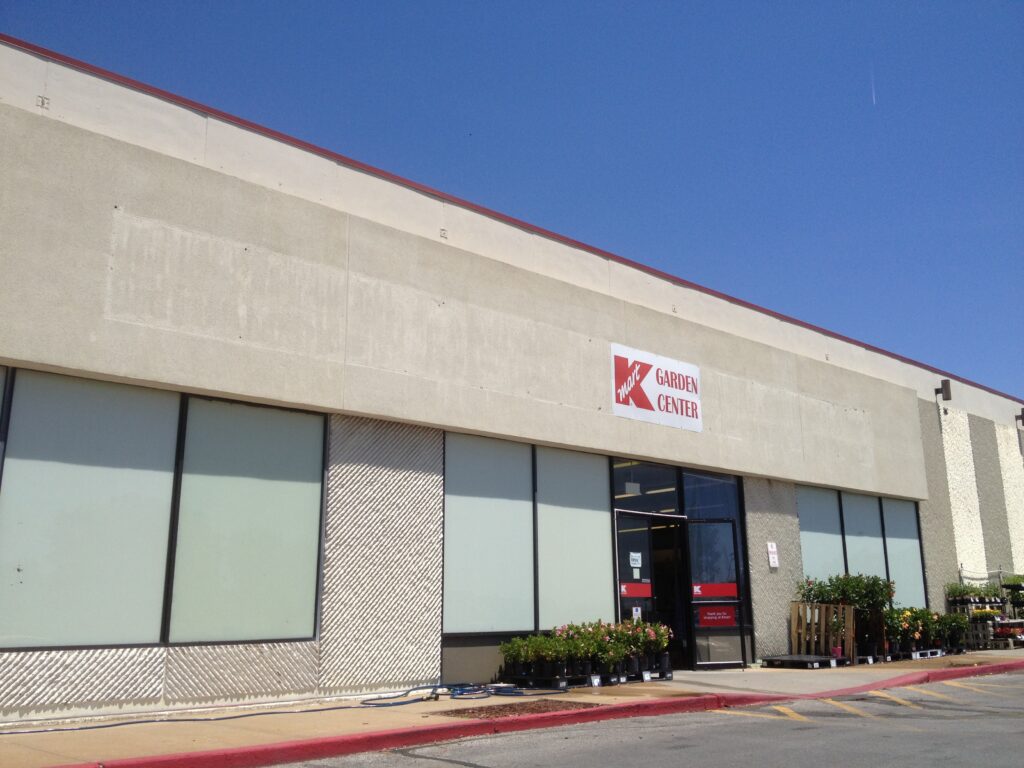
Venture stores were especially strong in the Midwest, offering affordable prices and a modern look for the time. The black-and-white striped bags became iconic, showing up in households everywhere. Venture wanted to be a more stylish alternative to Kmart, and for a while, it worked.
The downfall came when Walmart and Target expanded aggressively, leaving little room for mid-tier chains. Venture filed for bankruptcy in 1998, and most of its locations were taken over by Kmart. Today, people who grew up in suburban Chicago or St. Louis remember it fondly, but elsewhere the name barely rings a bell.
9. Best Products
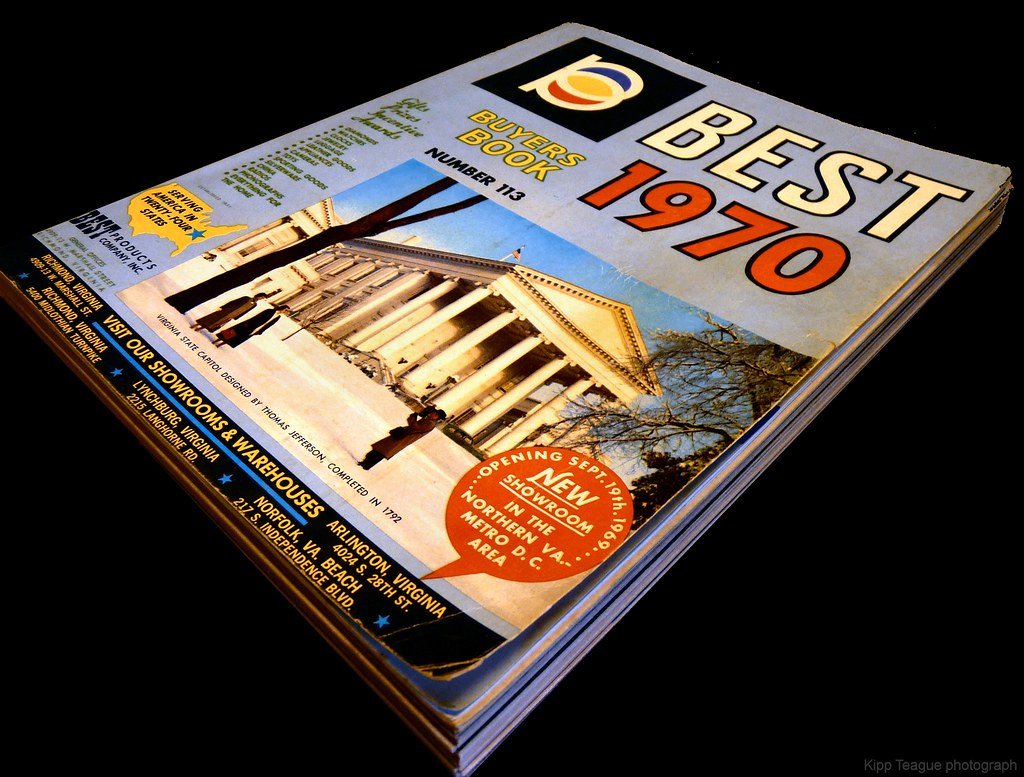
This was another catalog-showroom store like Service Merchandise. Best Products had a reputation for unique architecture, with some of its buildings designed to look like they were crumbling or half-open. Kids found them fascinating, and adults loved the deals on electronics and home goods.
But as with Service Merchandise, the model fell apart when big-box retailers made shopping faster and simpler. Best filed for bankruptcy multiple times in the 1990s before finally shutting down in 1997. The quirky buildings were either demolished or repurposed, but the chain still lives on in people’s memories.
10. Bradlees
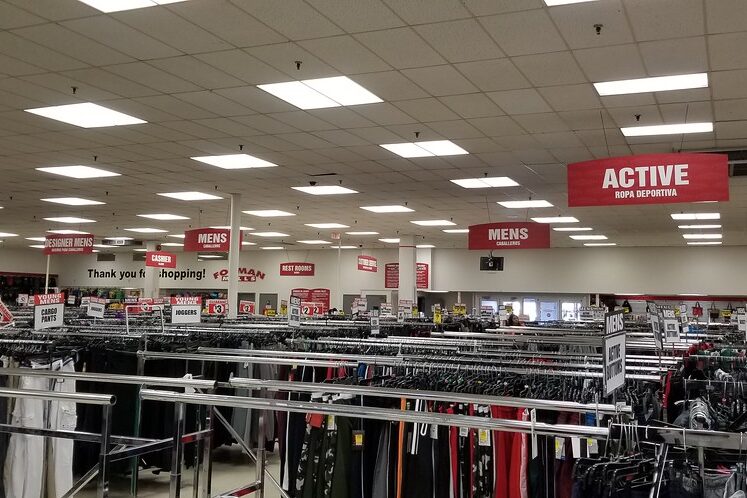
Bradlees was a discount chain that had a strong presence in the Northeast. Known for its affordable clothing and home goods, it was a go-to spot for suburban families. Their catchy commercials in the ’80s made the brand feel familiar and friendly.
Unfortunately, it couldn’t withstand the retail battles of the 1990s. Walmart and Target overshadowed Bradlees, and financial struggles mounted. The company filed for bankruptcy twice before finally shutting down in 2001. For many in New England, its absence left a noticeable gap in their shopping routines.
11. Phar-Mor
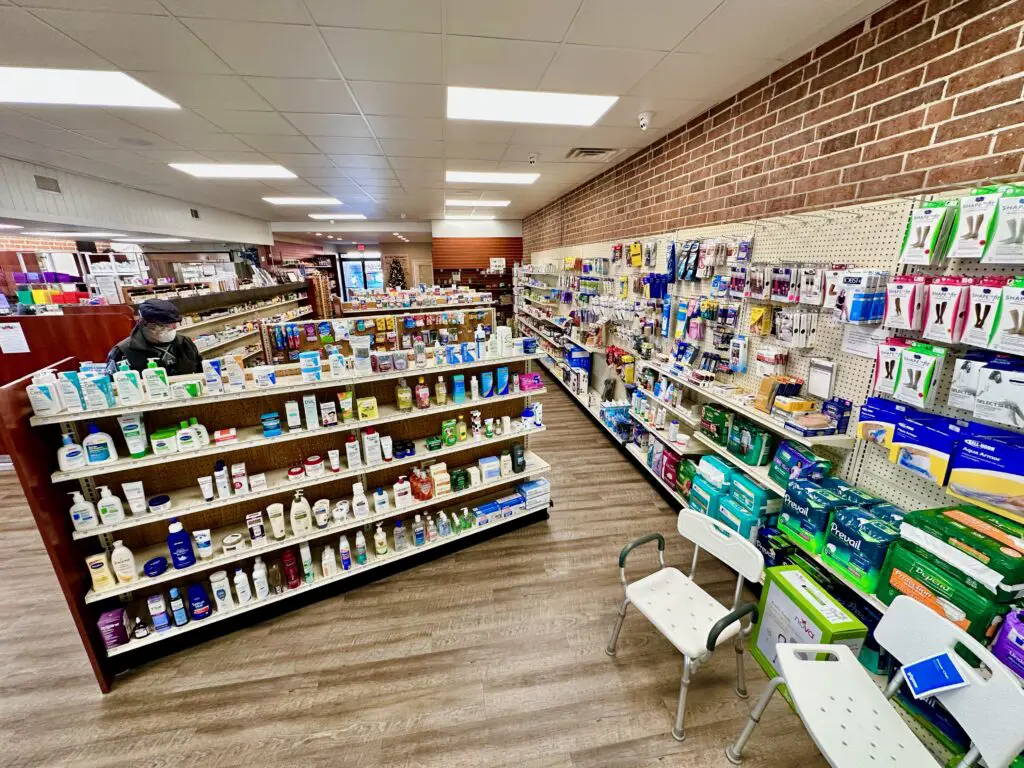
Phar-Mor was a discount drugstore chain that at one point seemed unstoppable. It was like a cross between a pharmacy and a mini department store, offering low prices on everything from medicine to household goods. Shoppers in the suburbs liked the convenience and the bargains.
But the chain was undone by scandal. In the early 1990s, it was revealed that Phar-Mor had been hiding massive financial fraud. The fallout destroyed the company, and by the early 2000s, it was gone. Its story remains one of the most infamous collapses in retail history.
12. Anchor Blue
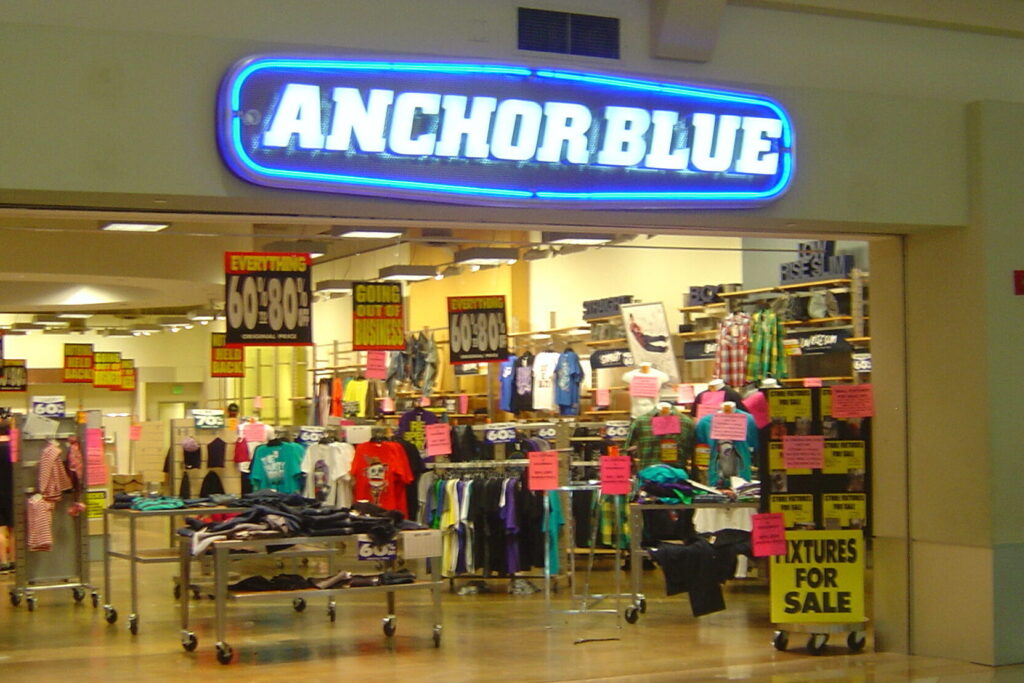
Teen shoppers in the ’90s will remember Anchor Blue, a clothing chain that leaned heavily on denim. Their stores were all over suburban malls, giving kids a place to browse for affordable jeans and casualwear. The brand had a cool, laid-back vibe that resonated with young customers.
But fast fashion chains like H&M and Forever 21 quickly outpaced them. Anchor Blue filed for bankruptcy in 2011, closing its doors for good. For many millennials, the memory of shopping there is tied to middle school and high school mall trips. It’s one of those names that instantly brings back a specific suburban era.
13. G.C. Murphy
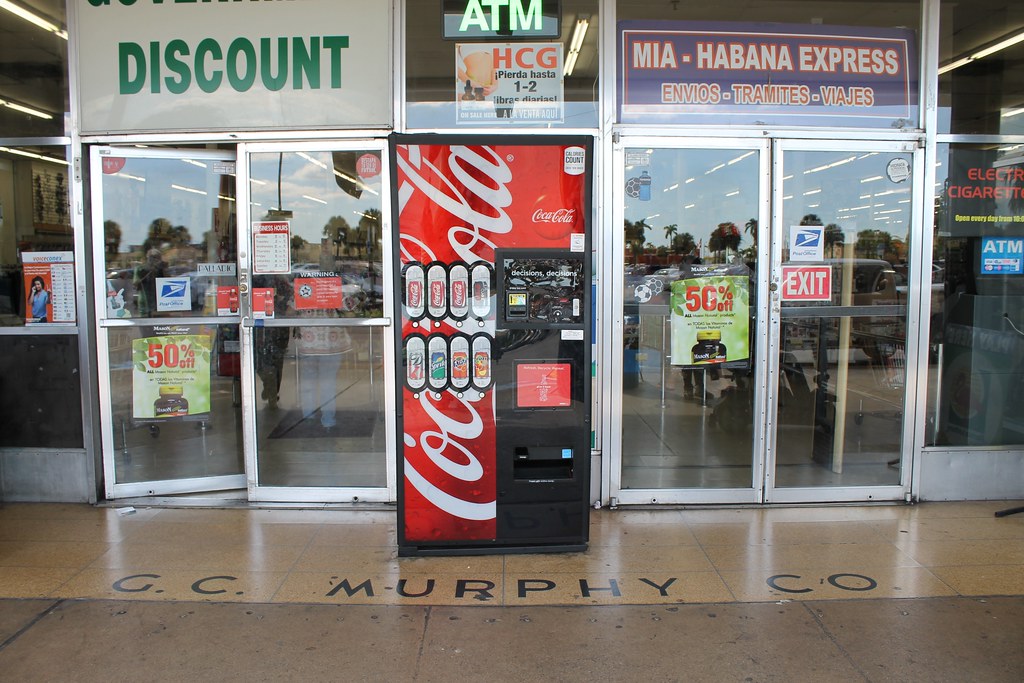
G.C. Murphy started out as a five-and-dime chain and became a household name in many suburban towns. Families could pick up toys, small appliances, and clothes, all at reasonable prices. The stores were especially popular in Pennsylvania and surrounding states.
But like Woolworth’s, the five-and-dime model fell apart as suburban shopping needs grew. Larger department stores took over, and Murphy’s couldn’t compete. By the 1980s, most stores had either closed or been absorbed by Ames. Still, longtime customers often speak fondly of Murphy’s charm.
14. Clover
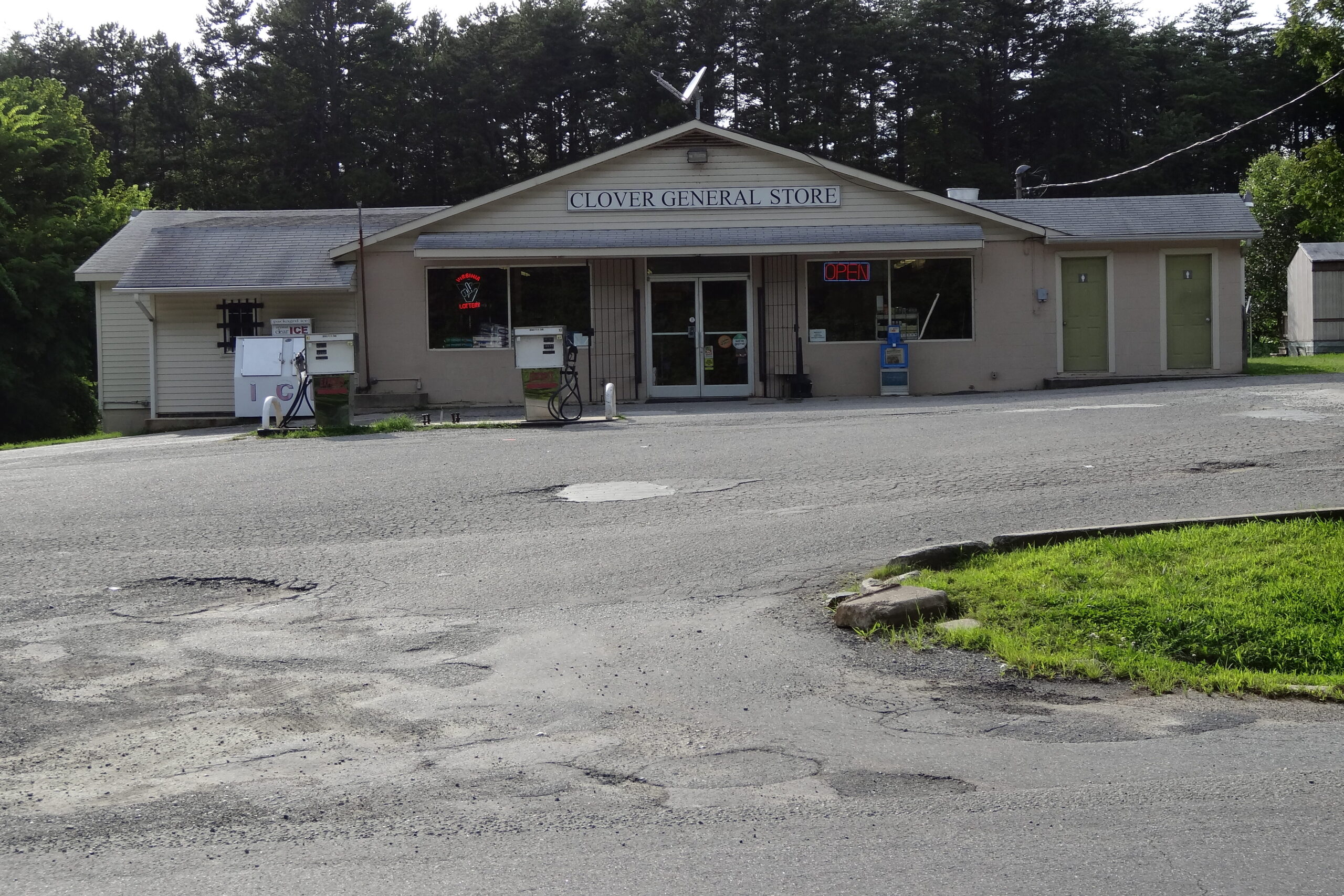
Clover was a discount chain tied to Strawbridge & Clothier in the Philadelphia area. It had a loyal suburban following, offering good deals on clothing, housewares, and seasonal items. For many families, Clover was a weekend shopping tradition.
But when Strawbridge & Clothier was sold in the 1990s, Clover lost its support system. The stores eventually closed, leaving suburban shoppers without their familiar bargain stop. Though it never reached the scale of Walmart or Target, Clover left behind a strong nostalgic imprint in its region.
15. Gottschalks
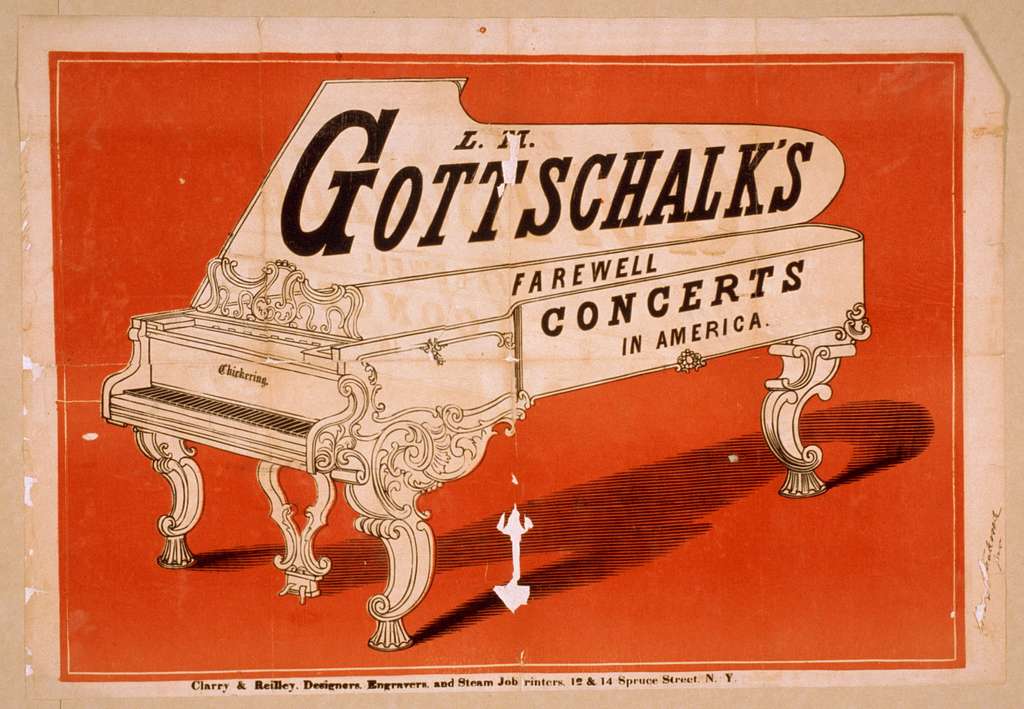
Gottschalks was a department store chain that dominated many suburban malls on the West Coast. Families shopped there for clothes, shoes, and home goods, and it had a reputation for decent prices with a touch of style. For suburban kids, a trip to Gottschalks often meant back-to-school shopping and new outfits.
The chain managed to hang on longer than many others, but by the late 2000s it was struggling against newer, bigger competitors. When the recession hit in 2008, Gottschalks couldn’t recover and closed for good in 2009. Its exit left malls with big empty anchors, a familiar sight in the retail decline story. Shoppers still remember it fondly as a dependable suburban staple.
16. Linens ’n Things
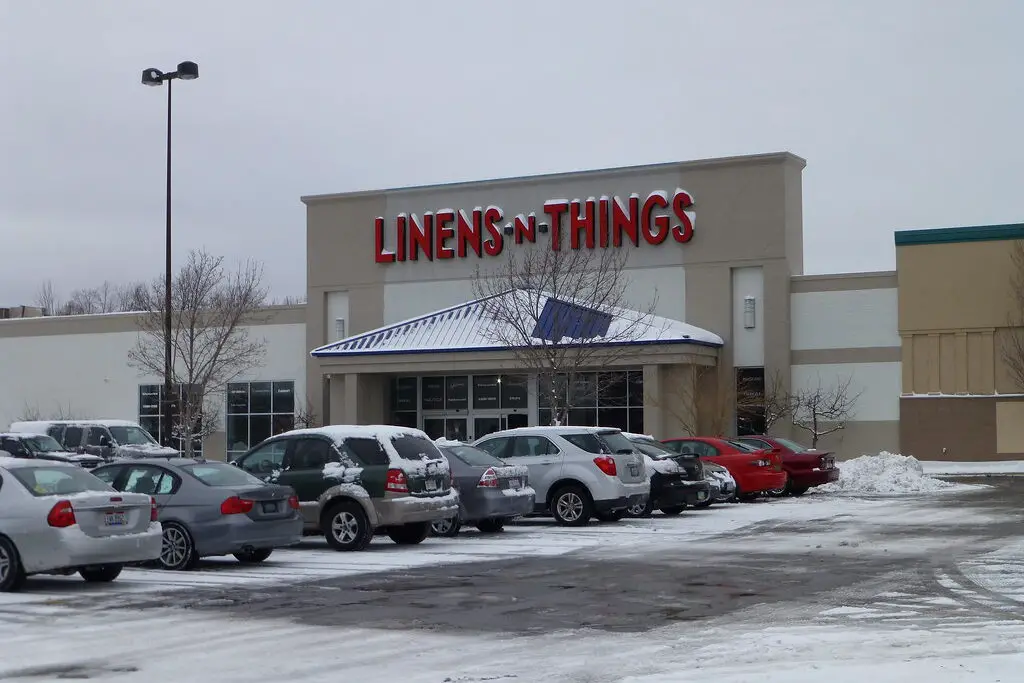
Before Bed Bath & Beyond dominated the suburbs, Linens ’n Things was the place to go for towels, sheets, and kitchenware. Suburban homeowners loved browsing the aisles for fresh bedding or seasonal décor. For newlyweds and first-time homeowners, it was practically a rite of passage to wander through Linens ’n Things with a registry list.
But the big-box wars were brutal. As Bed Bath & Beyond expanded, Linens ’n Things lost ground. By 2008, the company filed for bankruptcy and liquidated its stores. While the name was revived online, the brick-and-mortar version remains a distant memory of suburban shopping sprees.
17. Borders
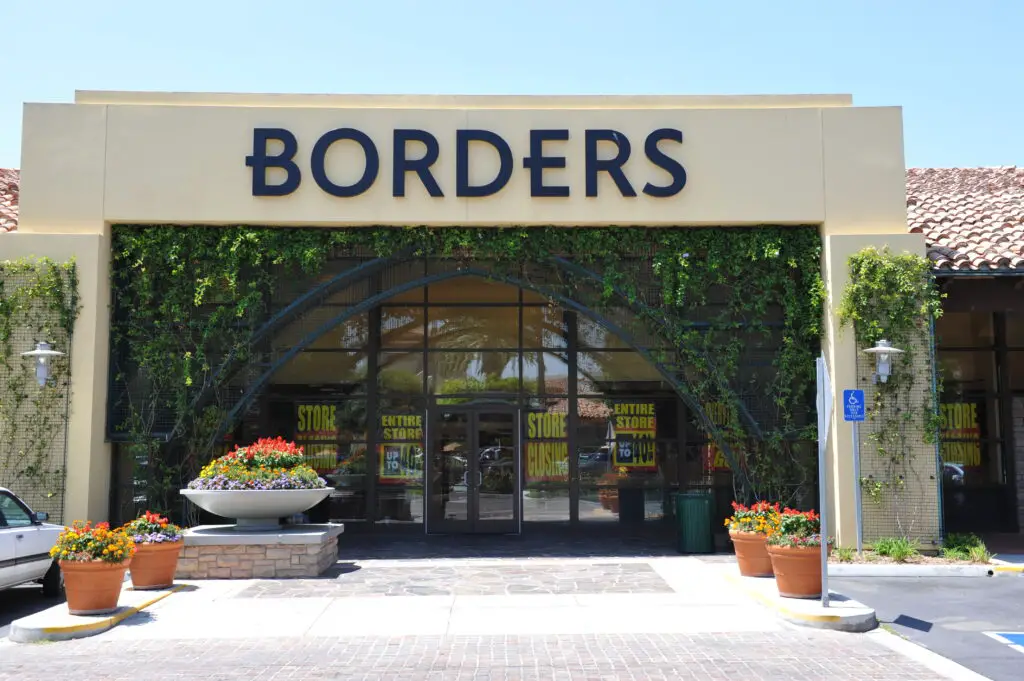
For book lovers, Borders was a suburban dream come true. The spacious stores were perfect for lingering, browsing shelves, and grabbing a coffee at the in-store café. Families often made weekend trips just to wander through the aisles, picking up novels, CDs, and even DVDs.
But Borders couldn’t keep pace with Amazon’s rise or Barnes & Noble’s aggressive strategies. The digital shift hit hard, and by 2011, Borders was gone. For many, the closure felt deeply personal, like losing a cultural hub in the suburbs. Today, people still miss the cozy vibe that Borders brought to shopping plazas.
18. Mervyn’s
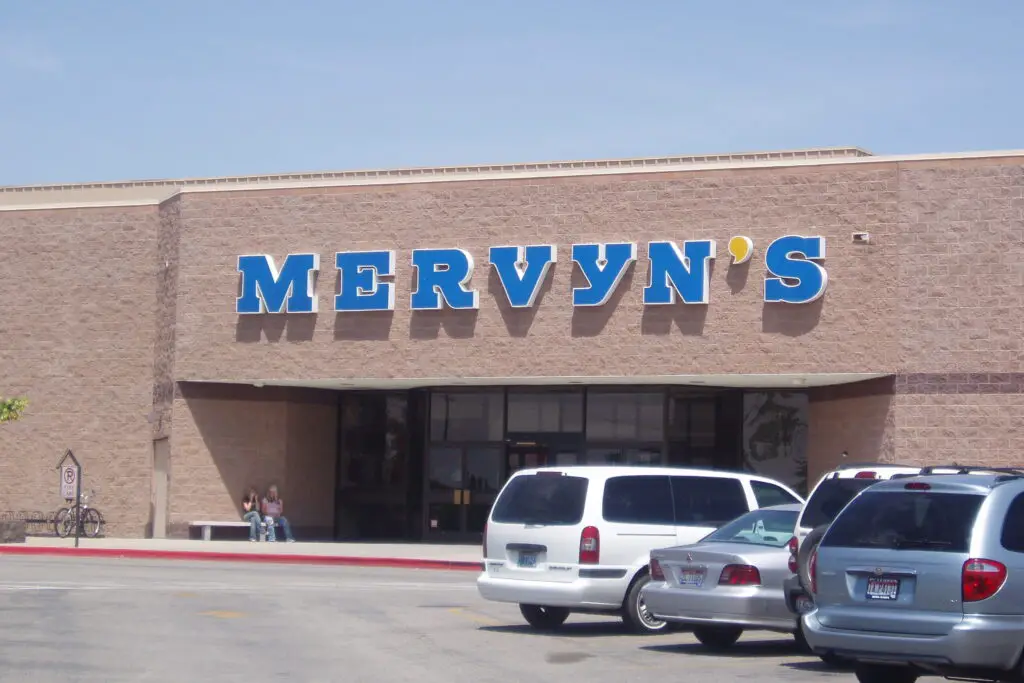
Mervyn’s was huge in the suburban West, especially in California, where it became the go-to for affordable clothing and household basics. It was less intimidating than big department stores and more polished than discount chains, striking a sweet spot for families. Parents appreciated the deals, and kids remember browsing the clothing racks for back-to-school looks.
The chain faced increasing pressure from Target, Kohl’s, and Walmart, and it couldn’t keep up with the price wars. In 2008, Mervyn’s declared bankruptcy and closed its remaining stores. For suburban families, it was a major loss, as Mervyn’s had been a reliable name for decades. The name is still remembered with nostalgia in Western states.
19. Circuit City
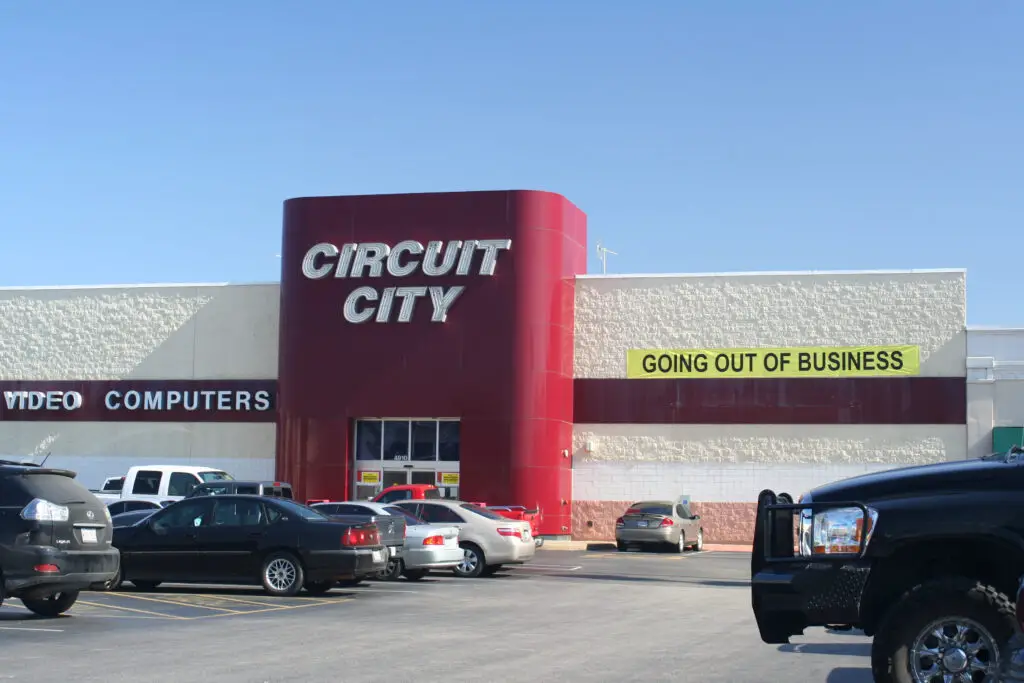
Electronics fans in the suburbs once flocked to Circuit City for TVs, stereos, and computers. The red-and-white signs were a familiar sight in shopping centers, and its selection was unbeatable for a while. Many families bought their first big-screen TV or home computer there.
But Best Buy and online retailers eventually left Circuit City in the dust. Its decision to eliminate commissioned sales staff backfired, frustrating both customers and employees. The company went bankrupt in 2008, and the stores quickly disappeared. For suburban tech shoppers, Circuit City’s fall was the end of an era.
20. CompUSA
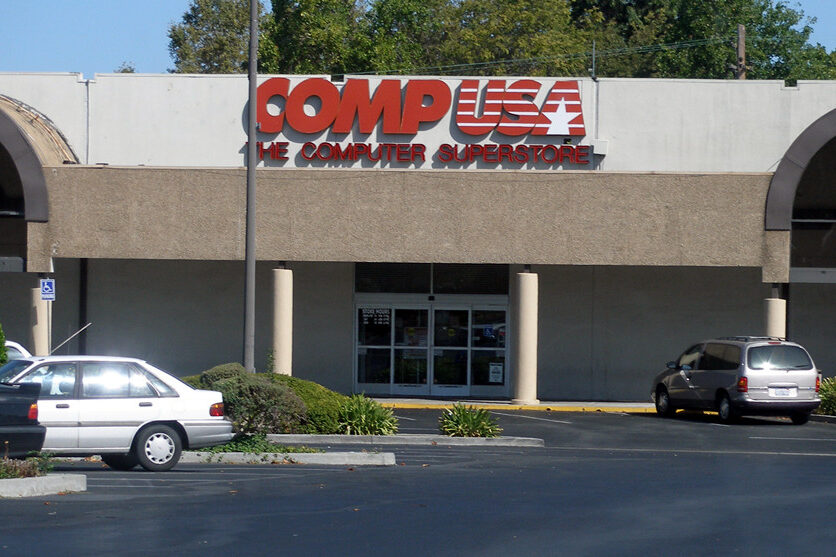
In the ’90s and early 2000s, CompUSA was a suburban mecca for anyone into computers. The aisles were filled with software, hardware, and tech accessories, and employees often knew their stuff. It was the place where families went to buy their first modem or digital camera.
But as online shopping grew, CompUSA’s relevance shrank. Electronics competitors like Best Buy and Newegg outpaced them with better pricing and convenience. The company eventually closed its last stores in 2012. For suburban tech geeks, the memory of spending hours browsing at CompUSA remains bittersweet.
